''The steering document is drawn up in Russian'': every year there are fewer and fewer ethnic schools in Tatarstan
7 Days: from dairy paradoxes to space heritage of the Republic of Tatarstan
Why do ethnic schools disappear in Tatarstan year by year? Who will be responsible for the closure of bus stations in districts? What is the danger from the fall in milk price for Tatarstan farmers? These and other questions were answered by correspondents of the weekly news and analytical programme 7 Days, broadcasted on TVN Channel. Read more in the overview of Realnoe Vremya.
Ethnic schools are under threat of extinction
Already in the mid-1990s, there were more than 2,300 ethnic schools in Tatarstan. Their number decreased threefold after 8-9 years. The latest official figure from the ministry of education — 700 such schools started their activities in 2018, that is, they became less by 57. If this process can be partly explained by the optimization of small schools in villages, then what is happening in other schools? As correspondents of 7 Days have found out this week, the leaders of ethnic educational institutions admitted that in schools the education is given in the Tatar language — often under the veil of secrecy.
The first Tatar grammar school in Nizhnekamsk appeared at the dawn of the parade of sovereignties. The ethnic movement was quite strong in the large industrial centre. In Nizhnekamsk they wanted to make not just a school, but an educational institution where children could get the best education in their native language. The mission seemed doable at that time – the Tatar grammar school was the best school of Russia two times. After almost 30 years, Tatar speech sounds less and less in the walls of the school. The grammar school still has the status of an ethnic educational institution, but only a small part of the disciplines are taught in the native language.
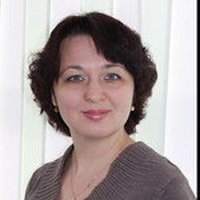 ''The standards are written in Russian. If you translate them literally, we can miss something, understand it incorrectly. Therefore, the steering document is drawn up in Russian,'' director of the grammar school No. 1 in Nizhnekamsk Guzelya Nabiullina explains.
''The standards are written in Russian. If you translate them literally, we can miss something, understand it incorrectly. Therefore, the steering document is drawn up in Russian,'' director of the grammar school No. 1 in Nizhnekamsk Guzelya Nabiullina explains.
The director admits that she herself doesn't know the language perfectly. At first, she even could not find a common language with parents. Parent meetings in the Russian language caused an uproar among Tatar-speaking population.
''There are also difficulties with the state final examinations. The 9th and 11th grades do not involve learning in the Tatar language. Therefore, I do not quite agree that a school with the Tatar language of education should teach all disciplines in Tatar,'' Deputy Head of the Department of Education of the Nizhnekamsk municipal district Ayziryak Ramazanova believes.
Today in Nizhnekamsk only two out of 52 schools are registered as Tatar ones, but it is possible to call them ethnic by a stretch of the imagination. Can schools with partial teaching in the Tatar language be considered as ethnic? It guarantees to the management a tick in the column ''ethnic education of the area''. For many it is enough. From this year, all Tatar classes have been closed in other general educational institutions of Nizhnekamsk. They used to be in every second Russian school. Now none of them has left.
In Naberezhnye Chelny, the grammar school No. 2 is considered the best ethnic institution. The school even received a grant from the state of 1 million rubles for ''the best experience in teaching the state language''. At the same time, the Tatar language is taught only in primary school. Starting from the 5th grade, children are taught only in Russian.
''In the 9th and 11th grades, all exams are held in Russian. Therefore, all disciplines are taught in Russian,'' says deputy director of the grammar school No. 2 Nurziya Salimzyanova.
The transition to Russian-language education is a kind of concession to the parent community. It turns out an absurd situation. On the one hand, parents want their children to know the Tatar language. On the other hand, they oppose lessons in their native language.
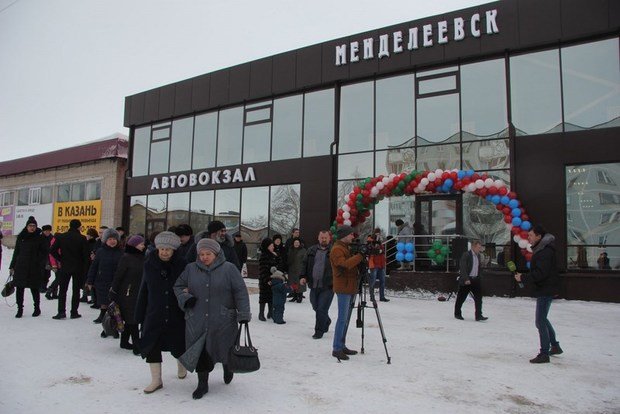
Mythical bus stations in municipalities
On 20 February 2017, the long-awaited bus station opened in Mendeleyevsk. But today, the important social object for the town has turned into a shopping centre. On the second floor there is a cozy cafe, on the first floor there is a furniture store.
The cafe owner, Saliga Bayazova, leases the entire second floor. The cafe actually performs the functions of the station: gives the opportunity to warm up and hide from the weather.
''I cannot kick people out, after all,'' Bayazova says.
Ismagil, a bus driver, drives the trips Mendeleevsk-Naberezhnye Chelny. All tickets are sold only in the bus today. He is sure that the city needs the station.
''The station is needed anyway. Once it was opened, it means that targeted funds were allocated. It turns out that now the building is used for other purposes,'' says Yulia Semysnovich, the representative of the public organization People's Control.
''Why has the station in Mendeleyevsk been closed and whether it will be revived?'' 7 Days correspondents asked the head of the area, Valery Chershintsev. But in the end, it was First Deputy Head of the Executive Committee Ildar Safin who had to respond.
Safin is a new man in the administration, he came in August. He could not answer to the journalists' questions precisely.
''The owner is a private person. There were no problems with the organization of the allocation of the premise, in particular bus station, from owners. We have a problem with service: utilities, the issues concerning the service personnel,'' Safin told.
On September 29, the opening of the new bus station was held in Yelabuga. Now the door of the building is locked, although only four days have passed since the opening.
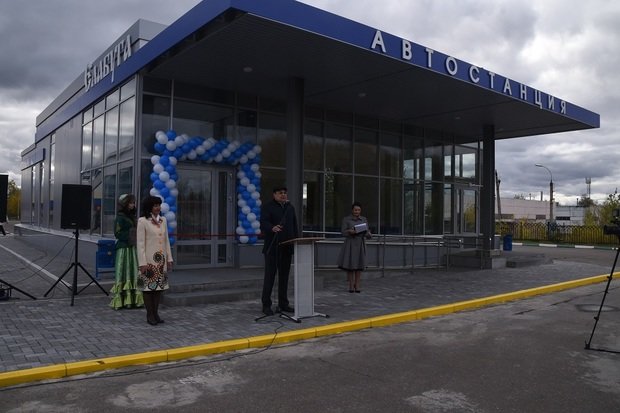
''We are planning to submit proposals to the leadership of the republic to draw attention to this problem. Public transport has begun to function, but not all municipal districts have a bus or bus station. This is a very big problem for people,'' said the coordinator of the All-Russia People's Front in the Republic of Tatarstan, Lenar Gaynullin.
There is only a store located in Tyulyachi on Lenina Street, 71A. Although, according to the order of the Ministry of Transport No. 454 as of 11 September 2018, there must be a stop. According to another order, No. 518 as of 2017, the stop is designated near the house No. 31.
''We have found no bus stops or bus stations on the one or the other address,'' says Lenar Gaynullin.
The correspondents did find the stop in Tuylyachi, but not where the paper says. Local resident Alexander notes — it is rather a ''local monument''. He hasn't seen intercity buses here for a long time. According to him, the locals get to Kazan by car or car share.
The failures of farmers of the Republic of Tatarstan
In the address to the State Council of Tatarstan, Rustam Minnikhanov stated the need to improve the efficiency of agricultural production. In the first half of this year alone, more than 7 billion rubles were allocated to support agriculture in Tatarstan. For comparison, this is a third of the budget of Kazan for 2018. At the same time, regions and agricultural enterprises close in economic opportunities show completely different results. The support is the same, the conditions for work are actually the same, but in one area they produce a glass of milk, in the other — tonnes.
For example, one company Prodprogramma, Mamadyshsky district, alone produces 140 tonnes of milk a day. It's more than Bavly, Yelabuga and Rybnaya Sloboda districts put together, Rustam Minnikhanov said in the message. The Vakhitov farm located in the Kukmor district now produces 77 tonnes of milk a day — more than the entire Agryz district.
The agricultural cooperative named after Vakhitov built a megafarm of 1,200 milking cows in 2014 on their own money. The size of investments — 120 million rubles, the estimated capacity of milk production — 40 tonnes a day. Four years later, the herd is already 75 tonnes, two years later the farm plans to reach a hundred.
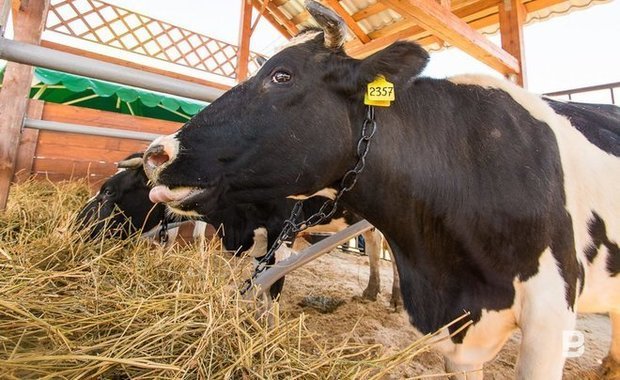
The cooperative intends to increase the production through the construction of new cowsheds and increasing the highly productive herd by another fifteen hundred heads. As a result, the size of investments have amounted to about 1 billion rubles for four years.
As much as this amount Ak Bars Holding invested in the construction of the megafarm for 2,600 goals in Agryz district five years ago. But after the years, the farm is loaded only by a half, and the area for the production of milk is among lagging behind in the republic. That is why in the address to the State Council Rustam Minnikhanov compared the indicators of particularly Kukmor and Agryz.
However, according to the ministry of agriculture of Tatarstan, there are five districts are in the list of outsiders. Kamiyar Baytemirov, the chief for the farms, believes that one of the reasons for the failures of the colleagues — poor knowledge of technologies.
''It is technological discipline at all levels, including authority,'' said Chairman of the Association of Farmers and Peasant Farmsteads of Tatarstan Kamiyar Baytemirov.
The situation at the megafarm in Agryz turned out to be so serious that at the beginning of the year the investor was forced to completely change the team. The new director, Radik Mavleyev, recruited specialists in Laishevo and Pestretsy and poached the main livestock specialist from the neighbouring Udmurtia.
The current leadership plans to increase the dairy production to 60 tonnes a day by the end of the year, 80 — by the next year, and to reach the mark of 100 tonnes a day by 2020, like in the farm in Kukmor.
Farmer Adil Latypov from Agryz has a higher yield of grains than in the district. Milk prices concern him more today.
''The prices have gone up now. We've been selling milk for 21 rubles per litre since 1 October, we sold for 17 rubles in summer. In 2016, it cost 26 rubles per litre. Business ran smoothly, we could do without loans,'' Latypov complaints. ''We count only on grain whose prices have augmented this summer,'' he adds.
According to Radik Mavleyev, due to the fall in milk prices, the big farm has lost over 30m rubles this year.
''But we need to understand that all agricultural enterprises of the republic have equal working conditions now. Our main task is to get the big farm, which means the whole district, out of the bottom of statistics,'' Mavleyev says.
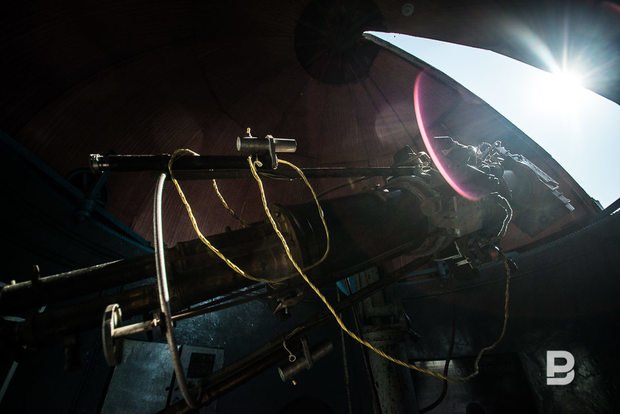
Tatarstan's space heritage
A Kazan observatory can be included in the UNESCO World Heritage Site List, while its facilities may be enlisted as the country's space heritage.
The history of the Kazan observatory is a history of the big friendship of Russian astronomers Dmitry Dubyago and Vasily Engelhardt. It was Engelhardt who gave all his expensive equipment to the future observatory in 1898. In 1901, the new scientific establishment opened far from Kazan. Both founder fathers found eternal peace in the observatory, as they dreamed. There is a century-old artificial star inside the burial vault that serves as a reference for the oldest and most precious equipment of the observatory – the meridian circle. It's located exactly on the meridian connecting two artificial stars of the observatory – in the South and the North. Such calibration is needed to observe the exact location of stars.
Irish optical master Howard Grubb's historic refracting telescope, the biggest telescope in the country that still operates, Engelhardt's gift to the observatory will remain here, forever.
''It was in 1896 when he sent it to Kazan. Engelhardt understood he couldn't observe physically and wanted his telescope to serve Russian astronomy. I've been looking through it during all my life,'' employee of the observatory, candidate of sciences, astronomer Inga Dubyago, the observatory's founder's granddaughter tells. She's spent all her life in the Kazan observatory.
Fundamental catalogues of stars, which are still used to create modern celestial systems of coordination, are built in the observatory's meridian circle. Photos of satellites of Mars, Jupiter and Saturn were taken by Engelhardt's refracting telescope. A unique heliometer was used for long observations of the Moon, to build a network of craters of the moon surface, it was consequently applied for space missions of ''moonwalkers'' and ''Apollos''.